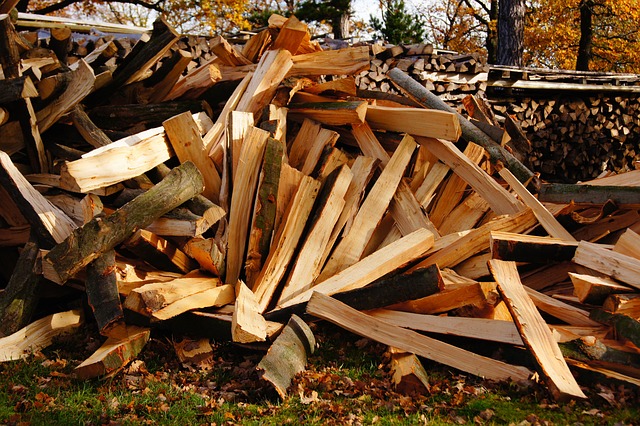The process of creating glue laminated beams involves layering and bonding wood strands or veneers with adhesive under precise pressure and temperature control to produce glulam—a strong, durable structural component. This modern construction technique offers unparalleled strength, versatility, and eco-friendly benefits, from reduced waste to minimized repair needs, making it a preferred choice for bridges, high-rise buildings, and sustainable architecture. "How Glue Laminated Beams are Made" involves meticulous selection, gluing, lamination, and curing processes, requiring expert engineers for optimal structural integrity and design freedom.
Glue laminating, or the process of bonding wooden beams together with adhesive, offers unique advantages in construction. This article delves into the intricacies of glue laminating, exploring its benefits, such as increased structural strength and versatility. However, it also scrutinizes potential drawbacks, including structural concerns and environmental implications. We’ll examine how glue laminated beams are made, their diverse applications, and cost considerations, providing a comprehensive review for informed decision-making.
- Understanding Glue Laminating Process
- Advantages of Using Glue Laminated Beams
- Disadvantages and Structural Concerns
- Environmental Impact and Sustainability
- Application and Cost Analysis
Understanding Glue Laminating Process

Glue laminating is a manufacturing process that involves bonding multiple layers of wood to create strong, durable structural components known as glue laminated beams or glulam. This innovative technique has been revolutionizing the construction industry for decades. The process begins with selecting high-quality wood strands or veneers, which are then carefully layered and glued together under precise pressure and temperature conditions. This intricate method ensures a robust final product.
The historical development of glue laminated techniques dates back to the early 20th century, when engineers sought more efficient ways to join wood. Over time, advancements in adhesive technology and lamination processes have made glulam a preferred choice for building structures like bridges, high-rise buildings, and wooden frames due to its superior strength-to-weight ratio. To learn more about how are glue laminated beams constructed and the science behind curing time and temperature control in lamination, give us a call at (607) 369-9341.
Advantages of Using Glue Laminated Beams

Glue laminating, or more specifically, how glue laminated beams are made, involves a sophisticated process that significantly enhances structural integrity. By layering multiple layers of wood with adhesive, these beams become a powerful and versatile building material. The lamination technique optimizes beam strength through precise alignment and bonding, making them ideal for load-bearing applications where high strength is required.
The curing process plays a crucial role in achieving maximum strength, as advances in wood adhesive bonding technology have allowed for more efficient and durable connections. This not only ensures structural stability but also allows for creative architectural designs that were previously challenging to realize. If you’re considering the benefits of glue laminated beams, give us a call at (607) 369-9341 for expert insights and guidance.
Disadvantages and Structural Concerns

While glue laminating offers numerous benefits for structural integrity and material strength, it’s not without its disadvantages. One significant concern revolves around health and safety considerations in glue application. Workers can be exposed to harmful fumes and chemicals during the process, emphasizing the need for proper ventilation and safety protocols. Moreover, the choice of glue is critical; incorrect selection can compromise the longevity and performance of glued timber structures.
Structural integrity, a key advantage of glue laminating, also presents challenges. Beams created through this method must be designed with precision to ensure even distribution of stress. Poorly executed gluing or inadequate beam design might lead to structural failures over time. However, understanding glue selection criteria for structural applications and employing experienced engineers can mitigate these risks. For more insights into best practices, visit us at unalam.com.
Environmental Impact and Sustainability

The environmental impact and sustainability of glue laminating are critical considerations when discussing innovative construction methods with glue laminated beams. This manufacturing process involves binding multiple layers of wood together with adhesive, creating strong and durable structural elements. One significant advantage is the potential for reduced waste compared to traditional solid lumber. By layering smaller pieces of wood, manufacturers can optimize the use of resources, minimizing residual material.
Moreover, the curing process plays a crucial role in enhancing the strength-to-weight ratio of glue laminated beams, making them an eco-friendly alternative. Optimizing this process ensures that the adhesive sets properly, resulting in maximum structural integrity. This not only contributes to the longevity of buildings but also reduces the need for frequent repairs or replacements, which can have a positive impact on both construction costs and waste management. To learn more about how glue laminated beams can contribute to sustainable construction practices, give us a call at (607) 369-9341.
Application and Cost Analysis

Glue laminating, or more specifically, how glue laminated beams are made, involves a precise process where multiple timber strips are bonded together using high-performance adhesives. This technique optimizes beam strength through lamination, resulting in structural elements that can support significant loads while maintaining exceptional stability. The manufacturing process begins with carefully selected timber, which is then cut to specified dimensions and glued edge-to-edge or face-to-face, depending on the design requirements. After application, the beams are pressed under controlled conditions to ensure uniform pressure distribution and optimal bonding. Quality control measures in glue laminated manufacturing are crucial to guarantee structural integrity; this includes rigorous testing for adhesion strength, dimensional stability, and resistance to environmental factors.
Cost analysis reveals that while initial investment in glue laminating equipment may be higher compared to traditional timber framing, the long-term benefits outweigh the costs. Sustainable architecture advocates often recommend glued timber solutions due to their reduced carbon footprint and potential for recycling. Moreover, the longevity of these beams, combined with their ability to withstand extreme weather conditions, makes them a cost-effective choice for various construction projects. For more information on how glue laminated beams can benefit your building needs, give us a call at (607) 369-9341.
Glue laminating, particularly for beams, offers enhanced structural integrity and durability compared to traditional construction methods. By understanding the process and weighing the advantages like increased load-bearing capacity and reduced material waste against disadvantages such as potential glue failure and structural limitations, builders and engineers can make informed decisions. The environmental impact of glue laminating, with its focus on sustainability through efficient resource use, makes it an increasingly attractive option for eco-conscious projects. As the demand for innovative construction techniques grows, exploring how glue laminated beams are made is crucial for navigating the future of building.













